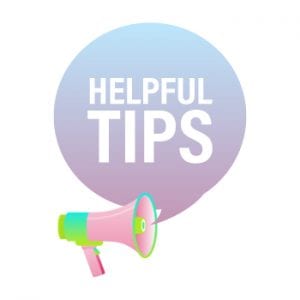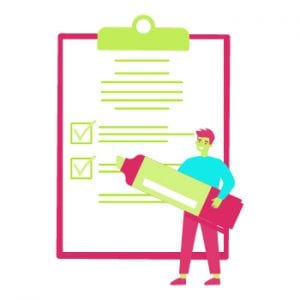
10 Tips How To Get An Accurate Translation
When it comes to professional translation, everything has to be perfect. Whether you are working for a company or you’re translating a blog for your followers, you can’t compromise on the quality of the content. Accurate translation is a must for all translation projects.
Whether it’s a literal translation in business, a transcript in education, a certificate in immigration, or a paper used in official matters, professional translation services are essential. This is the reason why diplomats don’t travel without professional translators. So, being an online translator, you have to keep in mind a few things.
Like every other skill and profession, human translation has some rules that you must follow. For example, if you are working on website translation or localization, you must understand that Google algorithms have gone smarter and quality and originality are the two must-haves for every piece of content out there. Keeping reference materials handy can aid in maintaining accuracy and consistency throughout the translation process.

What Should a Translator Do?
First of all, in order to improve your translation, prepare yourself for some new lessons. The world is going through the biggest evolution. New rules, new technologies, and modern terminologies have become a norm. To ultimately break out the language barrier, you must be open-minded to new suggestions.
Secondly, the use of technology is not bad. Of course, you would love the old-fashioned way but if something increases your efficiency while also promising quality and accuracy, there’s no harm in going with that.

Last, but not least, read blogs. Translation companies offer blogs that help translators and translation seekers equally. Just like this one you’re reading. Because today, we are sharing the industry’s proven suggestions to get accuracy in your translations.
10 Tips on How to Get an Accurate Translation
Pick The Best Grammar Tools and Apps
The translation is a tricky and meticulous task. But one thing that can lessen your worries is the use of the right translation tool. By installing the right grammar app and spell-checking tools, you can make the process easier. These may not help with your meanings but they’ll surely check your grammar. All you have to do is select your target language and upload your document into the app to see where you are wrong.
Follow Language-Specific Rules
Every language has its own interpretation rules. These could include verb usage, subject orientation, nouns, and pronouns, etc. To ensure that you are progressing in the right direction, make sure you follow the practices and rules and stick with them.
For instance, in Spanish or Finnish, gender may not be the same as in English, and while translating a document or a website, keeping that into account can prove to be a vital element. Moreover, these practices are the key to making the translated work sound original to the ears of the native speakers.
Don’t Deviate from The Original Text
Some languages are similar to each other but even in those languages, translating from one text to another is a conflicting task. So, while you can get carried away and the target language may seem fascinating to you, it could easily ruin the intended interpretation.
Therefore, the best way to preserve the original meaning is by following the original text. Get the complete idea of what’s written in the original text and go with it, even if it means altering some things in the translation.
Be Your Own Proofreader
Before submission, your work has to go through the editor and the proofreader, then why not do it yourself. A critical evaluation of your work may not seem easier but remember, if you do that, you might save additional time and effort of making revisions.
As a rule of thumb, read your work after you’re done. Then read the original text and compare its meanings with your translated piece. And lastly, give it a read after two to three hours and read it from the perspective of your client or your audience and see if your text is capable of achieving that.

Quality Comparison
Once you are done with the difficult task of translating the text, it’s time for a quality check. Compare both texts side by side and see if the quality of both documents is the same. If the answer is yes, it’s awesome but if it isn’t, time to make some modifications.
What you can’t ignore is the fact that in the end, the context should be the same. Because no matter how many fancy words you put in, if they fail to deliver the right meaning, they are entirely useless.

Verify Your Accuracy
There are many ways to do that but online editing websites or translation apps are the best options for you to follow. They not only identify mistakes but also help you in making the sentence flow better and more sensible. Pick a powerful translation app and you’ll get an accurate language translation in no time.
Another way to ensure accuracy is to find a similar text to your translated work and see if there are any differences in the terms you used from the text you are using for reference. From there, you will get an idea of what can be done to improve the accuracy of the text.
Watch Out For Double Meanings
In some languages, some words have different meanings and can be used with slight variations. However, if the translator is not proficient in the language, they can easily make a blunder. Next thing you know, your translation is not just rejected but you’re also a laughing stock now.
So, the best thing you can do is, to always check the meaning of the confusing term you’re using. It will improve accuracy and save you from embarrassment too.
Use Adjectives and Adverbs Wisely
It may seem like counterproductive advice but trust us, it isn’t. When you are translating a text, thoughts, and expressions equally matter. And where nouns and pronouns are significant and crucial, adjectives and adverbs can completely turn around the quality of your fresh translation.
So, what you can do is learn the best usage of adjectives and adverbs in the target language and utilize this skill to enhance the accuracy of the translation.
SEO Advice: Check Out the Headers
It feels tempting to use the most common headers but unique headers grab the most attention of the search engines. SEO is everything for businesses and websites and if you’re updating web content, then going with original headers, topics, and titles can really make a difference.

Choose A Translation Software
Yes, we know that this sounds unprofessional and unethical but imagine you’re given 25000 words to translate and they need it quick, what would you do? You don’t have the answer but we do.
A translation memory software or instant machine translation helps you with the repetitions. For example, if your given text has used the same words thousands of times, it will help you in translating those words without any need for you to enter its translation again and again.
Now, this doesn’t mean that they offer accuracy in context and intended interpretation, that’s what you’ll have to do during the proofreading phase but it can surely help you in saving that extra time and effort and utilize it in starting a new project.
Leveraging CAT Tools for High-Quality Translations
Computer-Assisted Translation (CAT) tools are indispensable in achieving high-quality translations. These tools not only speed up the translation process but also ensure consistency across the entire document. By utilizing features like translation memory and terminology management, translators can maintain uniformity in the use of specific terms, which is critical for precise translations.
CAT tools come equipped with advanced features that assist in maintaining the context and flow of the original text. These features include segmenting entire sentences and analyzing sentence structure, which helps in producing nuanced translations. By leveraging these tools, translators can ensure that the quality of translations meets industry standards, thereby avoiding inaccurate translations that can lead to misunderstandings or miscommunications.
Furthermore, integrating CAT tools into translation workflows allows expert translators to focus more on the creative aspects of translation. This not only enhances the overall quality but also ensures that the translations are tailored to the target audience. By doing so, the translations not only convey the correct message but also resonate with the readers on a deeper level.
Balancing Human and AI Translation
The translation process has evolved significantly with the advancement of technology, particularly with tools like Google Translate that utilize artificial intelligence and neural networks for automatic translations. While these tools can quickly convert text between European languages and other language pairs, there are still concerns about translation quality and translation accuracy, especially when considering the cultural nuances and tone of voice in the source language. Human translators, such as freelance translators, play a crucial role in refining translations by ensuring that the nuances of the native language are accurately conveyed. In contrast to direct translation or statistical machine translation, human translators bring a deep understanding of the foreign language, making their expertise invaluable for high-quality English translations and other language pairs.
Enhancing Translation Workflows with Technology
The translation industry has significantly evolved with the advent of various technologies aimed at improving translation workflows. Machine translation tools and machine translation services have revolutionized the way translations are done, offering speed and efficiency that were previously unattainable. However, to achieve nuanced translations, human expertise is still essential.
Advanced translation workflows often integrate both machine translation tools and human proofreading to ensure the highest quality of translations. This hybrid approach leverages the speed of machine translation while benefiting from the nuanced understanding of expert translators. As a result, the final output is both accurate and culturally relevant, avoiding the pitfalls of inaccurate translations that purely machine-based methods might produce.
Mobile apps have also become a vital part of modern translation workflows. These apps offer on-the-go translation capabilities, allowing translators to work from anywhere and at any time. With features like terminology management and real-time collaboration, mobile apps ensure that translators can maintain the quality of translations even when working remotely, thus expanding the possibilities for the translation industry.
Top-Quality Document Translation
Achieving high-quality document translation involves meeting rigorous quality standards and ensuring customer satisfaction. Quality assurance processes, including statistical process controls and failure testing, are essential in maintaining the quality level expected by customers. To meet quality requirements and regulatory standards, quality management systems are employed, ensuring that the finished products adhere to international standards. Real-time translations and neural machine translations are integrated to enhance efficiency while meeting customer requirements in their preferred language. Quality control measures address any quality issues promptly, ensuring that the product quality aligns with customer expectations. This meticulous approach fosters customer loyalty and improves customer experiences. Customer feedback is invaluable in refining quality objectives and enhancing the overall quality of products, ensuring a high-quality product that meets and exceeds customer expectations across a wide range of applications.
Advanced translation workflows often integrate both machine translation tools and human proofreading to ensure the highest quality of translations. This hybrid approach leverages the speed of machine translation while benefiting from the nuanced understanding of expert translators. As a result, the final output is both accurate and culturally relevant, avoiding the pitfalls of inaccurate translations that purely machine-based methods might produce.
Mobile apps have also become a vital part of modern translation workflows. These apps offer on-the-go translation capabilities, allowing translators to work from anywhere and at any time. With features like terminology management and real-time collaboration, mobile apps ensure that translators can maintain the quality of translations even when working remotely, thus expanding the possibilities for the translation industry.
Conclusion
If you’re not an online translator and looking for an accurate translation of your documents, including legal documents, our translation agency is here to help you. With our native and professional translators, we ensure accuracy, quality, and fast turnaround. You can always get in touch with us via live chat, email, or filling our form on the contact us page and get headache-free translations anytime.
Frequently Asked Questions
What steps can I take to ensure translation accuracy?
To ensure translation accuracy, follow these steps: understand the context and purpose of the source text, maintain cultural sensitivity, use specialized tools like translation memory for consistency, and proofread and review the translation thoroughly.
How important is understanding the source and target languages?
Understanding both the source and target languages is crucial for accurate translation. It ensures you convey the intended meaning, maintain linguistic accuracy, and capture cultural nuances.
Should I rely on machine translation for accurate translations?
While machine translation can be helpful for basic translations, relying solely on it may lead to inaccuracies, especially in nuanced or complex texts. Combining human review with machine translation can improve overall quality.
How do I handle industry-specific terminology?
Use specialized dictionaries and glossaries to handle industry-specific terminology accurately. Working with subject matter experts can also help ensure precision in translations.
What role does proofreading play in accurate translation?
Proofreading is essential for accurate translation. It involves reviewing the translated text to correct errors, ensure consistency, and verify that the translation captures the tone and intent of the original text.
